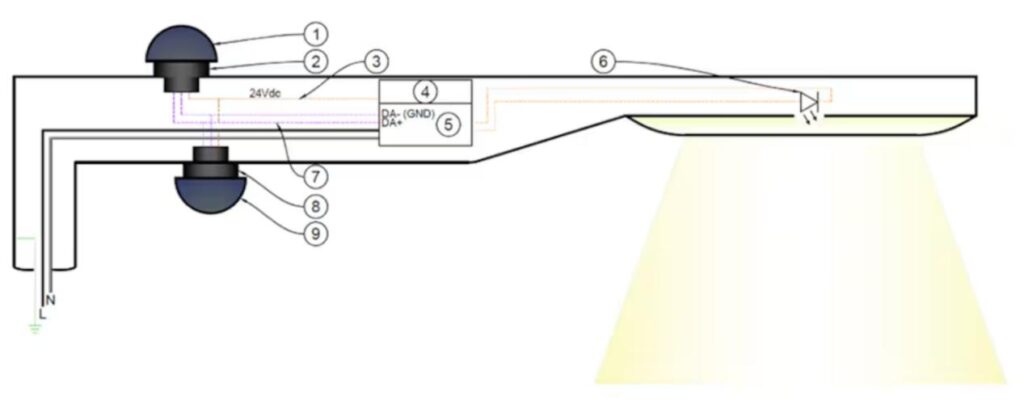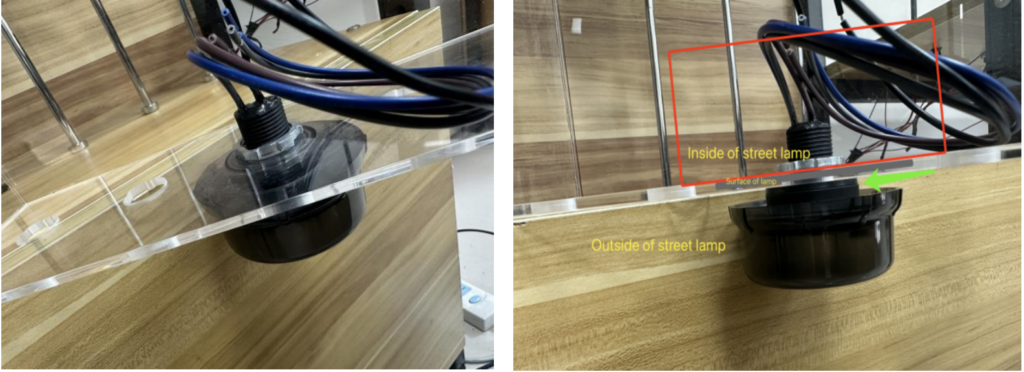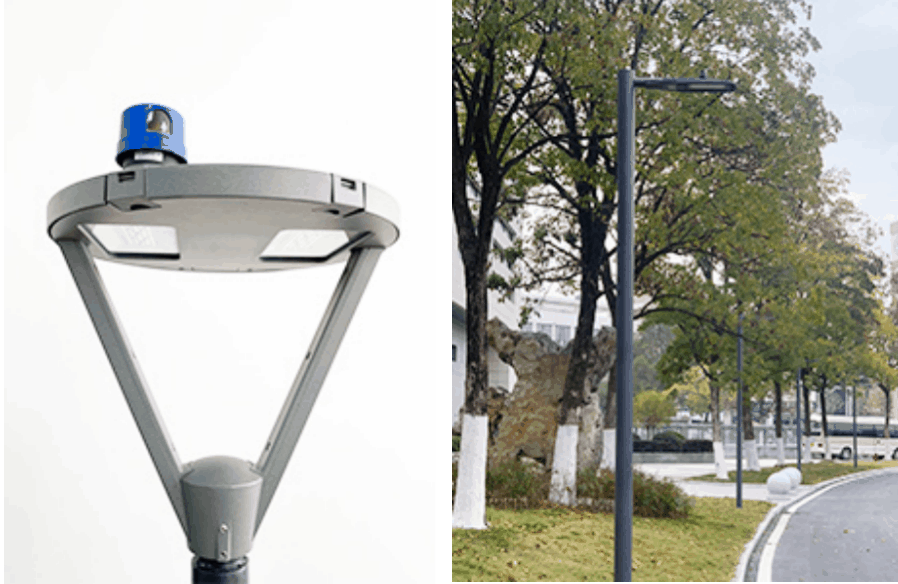Outline
- Introduction
- Understanding Zhaga Sockets and Their Applications
- Potential Issues with Upside-Down Installation
- Physical Analysis and Testing
- Simulation Setup Using a Zhaga Book 18 Socket and Control Device
- Testing Conditions and Methods
- Observations
- Insights on Waterproofing and Controller Selection
- Key Features for Reliable Waterproof Performance
- Recommendations for Manufacturers and Users
- Real-World Implications
- The Bottom Line
Modern streetlight systems have evolved far beyond their original purpose of illumination. Today, they serve as hubs for smart city functionalities like WiFi access, air quality monitoring, traffic management, and even surveillance. Central to this transformation is the Zhaga socket—a standardized interface that allows easy integration of sensors and controllers.
While Zhaga receptacles are designed with robust features, one common question arises: does orientation matter? Specifically, what happens when Zhaga sockets and switches are installed upside down in environments exposed to rain and humidity? This concern isn’t just theoretical—it has real implications for the waterproofing and reliability of both the sockets and connected devices.
In this article, we’ll explore the technical aspects of upside-down installation and provide insights to ensure your streetlighting systems remain functional and protected in all weather conditions.


Understanding Zhaga Sockets and Their Applications
Zhaga Book 18 defines standardized interfaces for a wide range of outdoor LED luminaires that can be seamlessly integrated into sensors and modules from different manufacturers. This standard ensures interoperability and prevents the need to redesign lights when new technology is adopted by the market.
Zhaga 4-pin receptacles are highly adaptable, allowing installation in upward, downward, or sideways orientations to suit different luminaire designs. This versatility is crucial for outdoor use, where space and environmental factors vary.
Key features include a compact design, UV-resistant materials, and an IP66 rating, providing robust protection against dust and water ingress. These sockets come with integrated gaskets to seal the luminaire and module, simplifying assembly and improving waterproofing.
With these features, Zhaga sockets not only support current smart lighting needs but also prepare luminaires for future applications like traffic monitoring, pollution detection, and public WiFi.
Potential Issues with Upside-Down Installation
Zhaga Book 18 sockets are built to meet IP66 waterproof standards, providing robust protection against dust and water. However, when installed upside down, the dynamics of water flow and accumulation change. Rainwater can pool around the sealing interfaces due to gravity, especially if the luminaire design doesn’t effectively channel water away.
Over time, this may lead to micro-leaks if the seals are not perfectly intact. Furthermore, environmental factors like UV exposure and temperature fluctuations can deteriorate the gasket material, compounding the problem.
So here are the implications of prolonged exposure of water to light sensors.
Firstly, photocontrollers and sensors connected to Zhaga sockets rely heavily on the waterproofing integrity of the socket itself. If water ingress occurs, it can reach the internal components, causing electrical short circuits, corrosion, or even complete device failure.
Further, Sensors, particularly those used for critical applications like air quality monitoring or traffic detection, may lose calibration or become unresponsive.

Physical Analysis and Testing
To assess the waterproofing performance of Zhaga Book 18 sockets when installed upside down, a series of simulations and tests were conducted. These evaluations aimed to replicate real-world conditions and determine the reliability of the sockets in such orientations.
Simulation Setup Using a Zhaga Book 18 Socket and Control Device
The testing involved a Zhaga Book 18-compliant socket paired with a compatible control device. As seen in the image below, the socket was mounted in an upside-down position to specifically evaluate its performance under this less conventional orientation.
This setup aligns with the flexibility offered by Zhaga Book 18 sockets, which support various installation positions, including top surface, side, and upside-down installations.

Testing Conditions and Methods
To simulate the environmental conditions a streetlight might encounter, the assembly was enclosed within a transparent box representing the lamp chamber.
This enclosure allowed for visual monitoring of any water ingress during testing. The setup was subjected to controlled water exposure, mimicking rainfall, to observe how water interacted with the socket’s sealing mechanisms when installed upside down.
Observations
The tests revealed that even when installed upside down, the Zhaga Book 18 socket maintained its waterproof integrity. The IP66-rated sealing effectively prevented water ingress, ensuring the protection of internal components. This performance underscores the robustness of the socket’s design, which is intended to withstand various environmental conditions without compromising functionality.
For further details on why LongJoin’s Zhaga Book 18 socket is highly effective against moist ingress in rainy conditions, the video below shares the details.
Insights on Waterproofing and Controller Selection
Ensuring the longevity and reliability of outdoor lighting systems hinges significantly on the waterproofing of controllers, often more so than the orientation of the sockets. While Zhaga Book 18 sockets are designed to be versatile in installation, including upside-down orientations, the controllers connected to these sockets must possess robust waterproofing features to withstand environmental challenges.
Key Features for Reliable Waterproof Performance
When choosing controllers for outdoor applications, consider the following features:
- High IP Rating: Choose controllers with an Ingress Protection rating of IP67 or higher. It means the product is dust-tight and protected against immersion in water under a 1-meter depth.
- Sealed Construction: The enclosures should be sealed so as not to allow moisture entry. Waterproof connectors and gaskets will further enhance environmental protection.
- Durable Materials: Materials resistant to corrosion and UV radiation extend the controller’s lifespan.
Recommendations for Manufacturers and Users
Manufacturers must develop controllers with high IP ratings and robust sealing mechanisms. Strict testing should be done to validate performance under various environmental conditions. Detailed guidelines for the installation process can help users ensure that the system remains waterproof.
For users, paying attention to IP ratings and construction features is critical. Further, install them according to the manufacturer’s instructions. Maintenance checks should be done regularly to identify potential problems before they cause system failure.
Real-World Implications
Installing Zhaga Book 18 sockets in various orientations, including upside-down, is sometimes necessary due to specific design requirements or spatial constraints. Manufacturers like Longjoin have developed Zhaga Book 18 sockets that support various installation orientations, including upside-down, to cater to these diverse needs.
Further, to mitigate potential waterproofing issues during upside-down installations, ensure the luminaire’s mounting surface is clean and debris-free. Additionally, using the sealing gasket provided with the receptacle assembly is essential to maintain a watertight seal.
Lastly, it is advisable to carry out regular maintenance, including seal and gasket wear and tear inspections, for long-term performance.
The Bottom Line
While installing Zhaga sockets upside down might seem unconventional, proper sealing and adherence to guidelines ensure their waterproof integrity, safeguarding outdoor lighting systems in various conditions. Reliable waterproofing ultimately depends on quality components and meticulous installation. For dependable Zhaga sockets that meet industry standards, Chi-Swear stands out as a trusted supplier, offering robust, innovative solutions tailored to diverse outdoor applications.






